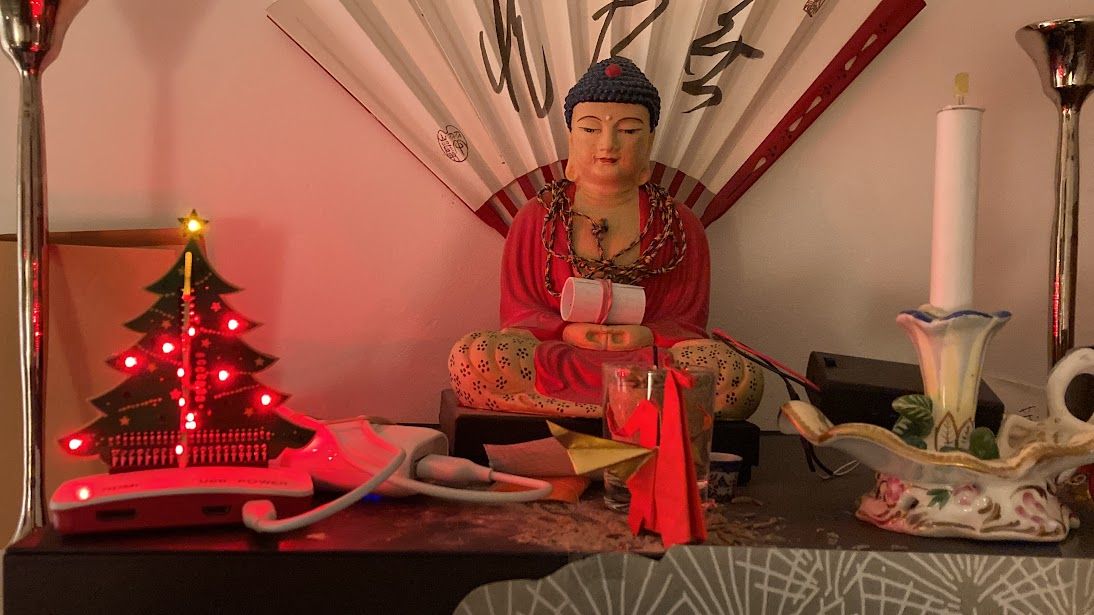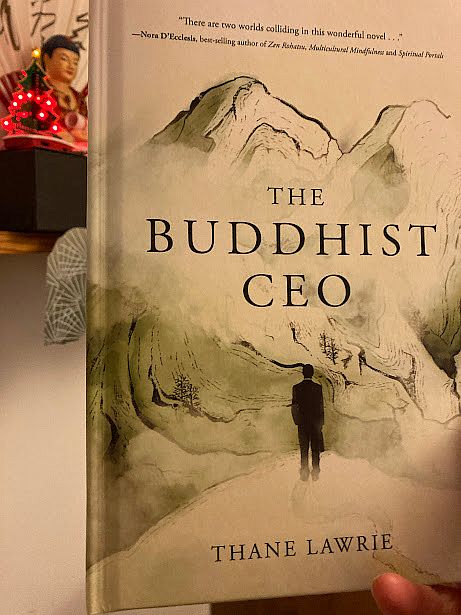Below is the gist of the talk I gave here on the 30th during a retreat. People were sitting in formal meditation at the time.
The audio of this talk can be found on the Throssel Hole Abbey website.
Here goes:
The Five Skandhas are a traditional Buddhist way of analysing a human being by conceptually splitting the self into five component parts. They are:
Form – which has to do with the material, or matter, we are made of;
Sensation – to do with information coming in through the senses whether pleasurable, painful or neutral;
Thought – our language system, mental images, symbols and words – which we use to organize and structure our experience coming in through the senses;
Activity (or volition) which has to do with emotions, a moving outwards beyond our self, emoting something, giving expression etc. (greed, anger and delusion are three main ways of acting), and
Consciousness – this has to do with the five senses and their objects. (Three aspects of each sense combine, e.g. ears, a sound and consciousness. There is a sixth sense, mind – relating to the deepest level of our mental functioning – what we ‘know’).
You could follow this link if you are a ‘consciousness’ aficionado because ‘consciousness studies’ is a HUGE and often hotly-contested area of academic study and debate. The link will explain for you the Buddhist take on consciousness…..
It is very easy to misunderstand The Scripture of Great Wisdom as saying there is no self, no individual person, no sentient beings even, which doesn’t mesh with everyday experience. We experience ourselves as a sense of self, which comes and goes in our conscious awareness, as needed. What’s being pointed out is, on the deepest level of understanding, there is no SEPARATE, unchanging, ‘self’. (Anatta*)
In the Scripture, Kanzeon is talking from the deepest wisdom of the heart, and knows that not only are ‘selves’ not separate, but that the senses are not separate from their objects either, e.g . there is no ear separate from sound; no taste separate from tongue, etc. This seems to not mesh with experience either! So, if the teaching embedded within The Scripture of Great Wisdom is not understood fully in terms of deepest wisdom, life would get seriously strange. Obviously!
In the last few lines of the Scripture, there is a clear instruction to keep moving on continuously from what’s known and understood, because anicca (change, companion to anatta) is always in operation. Rev. Master Jiyu would often quote the ending lines when somebody was having a persistent difficulty.
O Buddha, going, going, going on beyond
Always going on
Always becoming Buddha.
Hail, Hail, Hail
“And don’t forget the Hail, Hail, Hail”, she would say.
While keeping this ‘going on’ instruction in mind as a reminder of impermanence, there is the encountering and appreciating of the world of appearances, and acting (or not acting) within it. We can also appreciate the apparent separateness, plus accept and deepen our understanding of the Scripture.
Rev. Master used to describe this ever-changing interconnected universe (without edges) as flowing, like a great river. And the way to train within it is simply to trail one’s open hand in the flowing waters. When we do that, over time, we find there is no separateness between what we call us and the universe, between our hand and the flowing water. Any time we try and grab or push away ANYTHING we immediately feel the separateness, in one way or another. Is that not how ‘saddened love’ is generated?
Talk Two given on 30th Dec, New Year retreat 2022-3.
*There is an important story that is used to help people understand the idea of anatta. It is called Nagasena and the Chariot. The story is about a monk called Nagasena, who visited a king called Milinda. The king asked Nagasena for his name. Nagasena gave his name but then told the king that this was just his name and not his real person.

